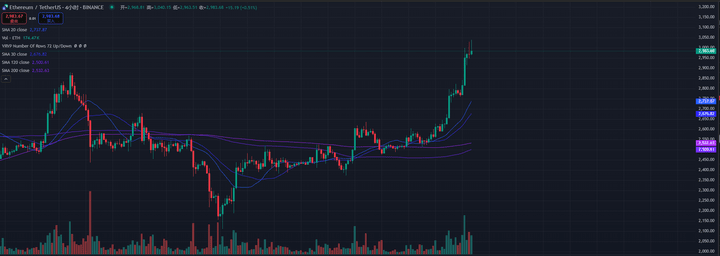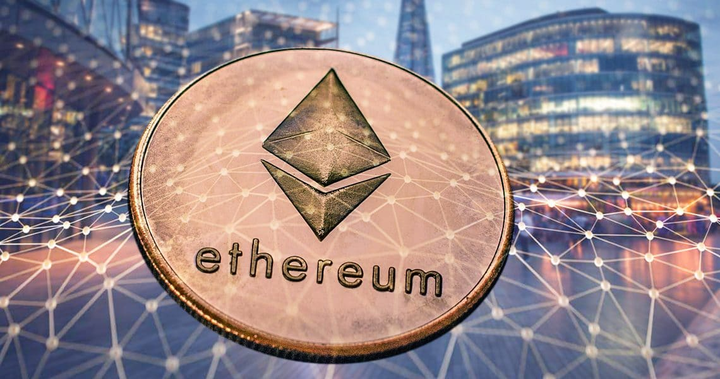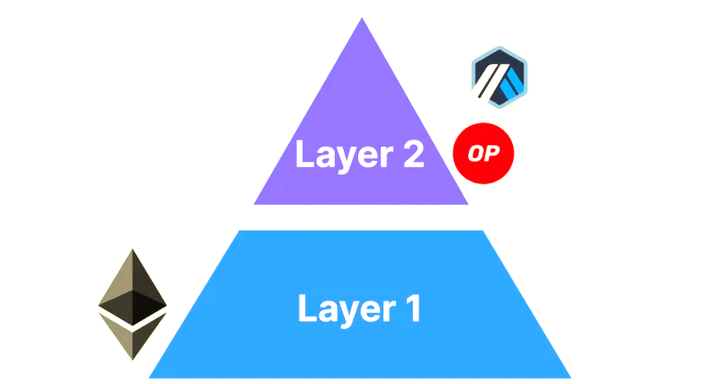Today, the price of Ethereum (ETH) stands above $3000, marking a new high since February this year. In this round of market activity, ETH has increased over 16% in seven days, and its market capitalization has risen to the 35th position globally. With market sentiment continuing to heat up, analysts generally believe that Ethereum's breakout may become a key signal for the explosion of altcoin season.

1. Four core driving forces propel ETH breakthrough
1. Corporate treasury accumulation trend
U.S. publicly listed companies like Bit Digital and GameSquare have recently announced plans to include ETH in their treasury assets. Data shows that over the past 30 days, corporate treasuries have purchased more than 200,000 ETH, far exceeding the net issuance of 57,000 during the same period. Former Ethereum core developer Eric Conner pointed out: "The structural changes in institutional holdings are reshaping the logic of ETH's scarcity."
ETF funding flood surges
The U.S. spot Ethereum ETF has seen over $600 million in net inflows for three consecutive days; Bitwise CIO Matt Hougan predicts: "Inflows in the second half of the year could reach the $10 billion level, which will continue to push up the demand ceiling for ETH."
3. Policy dividend release
Grayscale emphasizes in its latest research report: "Policies like the (GENIUS Act) will bring a window for compliant development to the Ethereum ecosystem." The clarification of the U.S. stablecoin regulatory framework further solidifies Ethereum's position as the "main channel for fiat on-chain."
4. Whales buying on dips
On-chain monitoring shows: On July 10, seven institutional whales collectively bought 128,000 ETH (worth $358 million) in a single day. 1confirmation founder Nick Tomaino interpreted this: "Whale movements are often a thermometer of market consensus."

2. KOL collective prediction: Altcoin season is imminent
Key signal: ETH/BTC exchange rate strongly reverses
Data analysis platform Swissblock pointed out in its latest report: "The Ethereum to Bitcoin exchange rate has shown the strongest upward momentum in 2023, which is typically a precursor indicator for the start of altcoin season." Historical data shows that when ETH consistently outperforms BTC, market funds quickly spread to quality altcoin projects.
Institutional holdings evidence shifts
Matrixport analysts found: "CME Ethereum futures open interest has soared to $3.27 billion, a five-month high, with professional investors positioning for an ETH-dominated market through the derivatives market." 10x Research adds: "Traditional asset management giants like BlackRock holding ETH inject a strong boost into the market."
Infrastructure value reassessment
David Hoffman, co-founder of Bankless, presents a core viewpoint: "The technical investment in MEV minimization by Ethereum is equivalent to the 'compliance certification' in traditional finance. When institutions like Robinhood choose blockchain, the technical credibility of ETH will be the primary consideration."

3. Three major observation dimensions for altcoin season explosion
Ecosystem token linkage effect
The current active loan amount in Ethereum lending protocols has reached $22.6 billion (historical peak), with leading protocol tokens like Aave and Compound showing upward trends.
Layer 2 projects are poised to launch
With the Ethereum Foundation restructuring its ecological development team to focus on scaling solutions, Layer 2 tokens like Optimism and Arbitrum may face a value reassessment.
New asset narrative fermentation
In the RWA (real world assets) sector, over 80% of projects are issued based on Ethereum. Nick Tomaino emphasized: "Trusting RWA is equivalent to trusting the ETH ecosystem.

Summary
The recent ETH breakthrough of $3000 is driven not only by capital but also reflects a dual recognition of regulatory compliance and technical infrastructure improvement. From KOL expectations to on-chain data, multiple evidence suggests that if ETH can maintain key levels, the market may enter a new cycle of altcoin season powered by Ethereum. However, investors still need to focus on core risk points: the timing of U.S. regulatory details and the sustainability of ETF capital inflows.